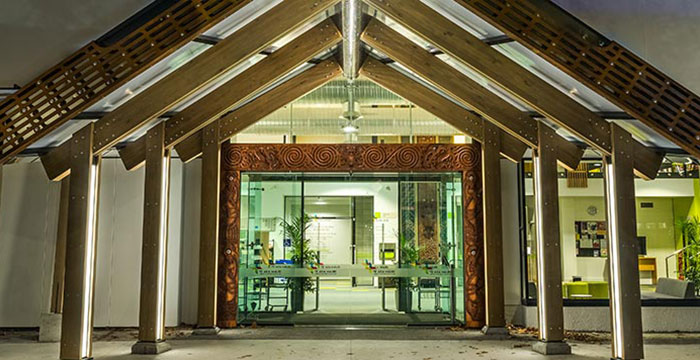Can you access health services at your local library?
In New Zealand, Rotorua Lakes Council and Lakes District Health Board collaborated to create Te Aka Mauri, which combines library and children’s health services in a central hub for Rotorua families.
Rotorua Lakes Council needed to make better use of its under-utilised library building in central Rotorua, which needed repairs and earthquake proofing. Meanwhile, the Lakes District Health Board (DHB) was struggling with low attendance, as many local children were not turning up to clinics, immunisations, or treatments. Recognising that a central, accessible centre would increase health services attendance and better utilise space, the DHB and Council joined forces.
GHDWoodhead creativespaces team provided architectural and interior design services for the project, working closely with the local community, stakeholders, and the local iwi (tribe) to incorporate the principles of mātauranga Māori (Māori world view).
The new health hub in the redeveloped library building is close to public transport, making it easy to access. Te Aka Mauri offers a warm and inclusive environment for families to enjoy while their children are accessing health services.
The local iwi, Ngāti Whakaue, helped create a philosophical framework to guide the design, drawing upon elements of cultural, spiritual, physical, mental, social, and environmental wellbeing. These are reflected in the name “Te Aka Mauri,” which was gifted by Ngāti Whakaue. Te Aka means “the vine” or “interconnection” and Mauri means “life force” or “essence”.
The land on which Te Aka Mauri sits was gifted to the city of Rotorua by the iwi, so it was important to incorporate artworks and design elements that reflect local history and identity. Many elements of the building include traditional artwork, including tukutuku (lattice-work) panels, carved pou (posts), and laser-cut corten steel on the entrance.
Now open for 18 months, Te Aka Mauri has led to a dramatic increase in clinic attendance rates and library use. The DHB’s previous 30 percent no-show rate has dropped to nearly zero, and the library is extremely popular.
The project has been celebrated for its innovation and collaboration, with awards from the New Zealand Institute of Architects and the Property Council New Zealand in 2019.



